#d1d1c4 Color Information
In a RGB color space, hex #d1d1c4 is composed of 82% red, 82% green and 76.9% blue. Whereas in a CMYK color space, it is composed of 0% cyan, 0% magenta, 6.2% yellow and 18% black. It has a hue angle of 60 degrees, a saturation of 12.4% and a lightness of 79.4%. #d1d1c4 color hex could be obtained by blending #ffffff with #a3a389. Closest websafe color is: #cccccc.
-
- R 82
- G 82
- B 77
-
- C 0
- M 0
- Y 6
- K 18
● #d1d1c4 color description : Grayish yellow.
#d1d1c4 Color Conversion
The hexadecimal color #d1d1c4 has RGB values of R:209, G:209, B:196 and CMYK values of C:0, M:0, Y:0.06, K:0.18. Its decimal value is 13750724.
| Hex triplet | d1d1c4 | #d1d1c4 |
|---|---|---|
| RGB Decimal | 209, 209, 196 | rgb(209,209,196) |
| RGB Percent | 82, 82, 76.9 | rgb(82%,82%,76.9%) |
| CMYK | 0, 0, 6, 18 | |
| HSL | 60°, 12.4, 79.4 | hsl(60,12.4%,79.4%) |
| HSV (or HSB) | 60°, 6.2, 82 | |
| Web Safe | cccccc | #cccccc |
| CIE-LAB | 83.517, -2.293, 6.439 |
|---|---|
| XYZ | 59.057, 63.142, 61.298 |
| xyY | 0.322, 0.344, 63.142 |
| CIE-LCH | 83.517, 6.835, 109.606 |
| CIE-LUV | 83.517, 0.714, 9.962 |
| Hunter-Lab | 79.462, -6.395, 9.886 |
| Binary | 11010001, 11010001, 11000100 |
Color Schemes with #d1d1c4
Alternatives to #d1d1c4
Below, you can see some colors close to #d1d1c4. Having a set of related colors can be useful if you need an inspirational alternative to your original color choice.
#d1d1c4 Preview
This text has a font color of #d1d1c4.
<span style="color:#d1d1c4;">Text here</span>This paragraph has a background color of #d1d1c4.
<p style="background-color:#d1d1c4;">Content here</p>This element has a border color of #d1d1c4.
<div style="border:1px solid #d1d1c4;">Content here</div>.text {color:#d1d1c4;}.background {background-color:#d1d1c4;}.border {border:1px solid #d1d1c4;}Shades and Tints of #d1d1c4
A shade is achieved by adding black to any pure hue, while a tint is created by mixing white to any pure color. In this example, #070706 is the darkest color, while #fcfcfb is the lightest one.
-
#070706
#070706rgb(7,7,6) -
#12120e
#12120ergb(18,18,14) -
#1d1d17
#1d1d17rgb(29,29,23) -
#28281f
#28281frgb(40,40,31) -
#333328
#333328rgb(51,51,40) -
#3e3e31
#3e3e31rgb(62,62,49) -
#494939
#494939rgb(73,73,57) -
#545442
#545442rgb(84,84,66) -
#5f5f4a
#5f5f4argb(95,95,74) -
#6a6a53
#6a6a53rgb(106,106,83) -
#75755b
#75755brgb(117,117,91) -
#808064
#808064rgb(128,128,100) -
#8b8b6d
#8b8b6drgb(139,139,109)
-
#959577
#959577rgb(149,149,119) -
#9d9d82
#9d9d82rgb(157,157,130) -
#a6a68d
#a6a68drgb(166,166,141) -
#afaf98
#afaf98rgb(175,175,152) -
#b7b7a3
#b7b7a3rgb(183,183,163) -
#c0c0ae
#c0c0aergb(192,192,174) -
#c8c8b9
#c8c8b9rgb(200,200,185) -
#d1d1c4
#d1d1c4rgb(209,209,196) -
#dadacf
#dadacfrgb(218,218,207) -
#e2e2da
#e2e2dargb(226,226,218) -
#ebebe5
#ebebe5rgb(235,235,229) -
#f3f3f0
#f3f3f0rgb(243,243,240) -
#fcfcfb
#fcfcfbrgb(252,252,251)
Tones of #d1d1c4
A tone is produced by adding gray to any pure hue. In this case, #cdcdc8 is the less saturated color, while #fdfd98 is the most saturated one.
-
#cdcdc8
#cdcdc8rgb(205,205,200) -
#d1d1c4
#d1d1c4rgb(209,209,196) -
#d5d5c0
#d5d5c0rgb(213,213,192) -
#d9d9bc
#d9d9bcrgb(217,217,188) -
#ddddb8
#ddddb8rgb(221,221,184) -
#e1e1b4
#e1e1b4rgb(225,225,180) -
#e5e5b0
#e5e5b0rgb(229,229,176) -
#e9e9ac
#e9e9acrgb(233,233,172) -
#ededa8
#ededa8rgb(237,237,168) -
#f1f1a4
#f1f1a4rgb(241,241,164) -
#f5f5a0
#f5f5a0rgb(245,245,160) -
#f9f99c
#f9f99crgb(249,249,156) -
#fdfd98
#fdfd98rgb(253,253,152)
Color Blindness Simulator
Below, you can see how #d1d1c4 is perceived by people affected by a color vision deficiency. This can be useful if you need to ensure your color combinations are accessible to color-blind users.
